- News
- Reviews
- Bikes
- Accessories
- Accessories - misc
- Computer mounts
- Bags
- Bar ends
- Bike bags & cases
- Bottle cages
- Bottles
- Cameras
- Car racks
- Child seats
- Computers
- Glasses
- GPS units
- Helmets
- Lights - front
- Lights - rear
- Lights - sets
- Locks
- Mirrors
- Mudguards
- Racks
- Pumps & CO2 inflators
- Puncture kits
- Reflectives
- Smart watches
- Stands and racks
- Trailers
- Clothing
- Components
- Bar tape & grips
- Bottom brackets
- Brake & gear cables
- Brake & STI levers
- Brake pads & spares
- Brakes
- Cassettes & freewheels
- Chains
- Chainsets & chainrings
- Derailleurs - front
- Derailleurs - rear
- Forks
- Gear levers & shifters
- Groupsets
- Handlebars & extensions
- Headsets
- Hubs
- Inner tubes
- Pedals
- Quick releases & skewers
- Saddles
- Seatposts
- Stems
- Wheels
- Tyres
- Health, fitness and nutrition
- Tools and workshop
- Miscellaneous
- Cross country mountain bikes
- Tubeless valves
- Buyers Guides
- Features
- Forum
- Recommends
- Podcast
feature
10 easy steps to clean and lube your bike's chain
Keeping your chain clean and lubricated makes for a better-running, more efficient bike, and prolongs the life of your sprockets and chainrings as well as the chain itself. Here's how.
Our guide below shows you what we believe is the best method to clean and lube your chain. We've included a list of the tools and materials that you will need to complete the job and in some cases where you can buy them. If there are others that you prefer then feel free to let everybody know in the comments.
Tools & Materials
•Chain cleaning device such as Pedro's Chain Pig (see review) or Muc Off X3 Dirty Chain Machine (see review)
•Degreaser such as Morgan Blue Chain Cleaner or Green Oil Clean degreaser
•Chain lube in dripper style bottle such as Hunslet Cycles chain oil or Muc-Off C3
•Small flat bladed screwdriver
•Lint-free rag
•Hot soapy water
•Sponge
•Brush
•Old toothbrush
1. Wash the bike, not just the chain. All you need is a soft brush and sponge and hot soapy water — the hotter the better for shifting greasy oily marks. Pay attention to the chain, working the brush into the derailleurs and rubbing the links to dislodge lumps of dirt and oily grime.
2. Use a thin, flat-bladed screwdriver to carefully remove any dried on grime that has caked around the jockey wheels of the rear derailleur. Try not to let the bits fall into the chain. The aim is to remove not redistribute the dirt.
3. A purpose-made chain cleaning device is the simplest way to get the rest of the grime out of your chain. You fill it with degreaser, clip it on to the chain and turn the pedals to pull the chain through the solvent bath and brushes. A chain cleaner won't always get the chain spotless, though, so read on for how to shift the rest of the crud and grime.
4. Soak a lint free rag with degreaser and massage each individual link until spotless. To clean the inner link plates, use a toothbrush to agitate the stubborn bits until they fall out. You might need a spot more degreaser on the head of the brush to help soften it up. Another run through a new bit of rag and the chain should be spotless. Run your fingers over it, you shouldn’t have any oil on them.
5. If your chain has a reusable master link, remove the chain and put it in a container such as a 500ml fizzy drink bottle that's half full of degreaser. Top it up and shake bottle to dissolve and dislodge the grime. If you're feeling adventurous put it in a dishwasher-proof plastic container and let the high temperature of the dishwasher rinse it spotless. Once you've washed it, hang it up to dry thoroughly.
6. Once it's dry it’s time for the lube, which needs to be on the rollers of the chain and not the outside. Lube on the outside of the chain just attracts dirt, which in turn forms a gungy, oily paste.
7. The trick is to apply the minimum amount of lube specifically to the inner link rollers only – anywhere else is a waste of lube. Don’t be tempted to use a spray. Even with a straw, it goes everywhere: all over the chain, the frame, brakes, floor. Instead, find a lube in a dropper bottle, one where a single drop is dispensed at a time.
Rotate the cranks backwards and allow a single drop to penetrate each of the rollers which separate the link plates. You’re looking to allow the lube to get inside the roller and form a protective barrier between the moving metal surfaces. You need a drop and not more. More will only lead to a chain that attracts more dirt, more quickly.
9. When the lube has been applied, give it a minute or two to settle into the deepest recesses. Then slowly rotate the cranks for thirty seconds to help get the lube into the rollers. Continue to rotate the cranks and use a clean, dry, lint-free rag to clean away any excess lube. Pay attention to the outer plates which should be more or less free of any lube.
10. Ride the bike for a few minutes, then wipe the chain down with your rag again to remove any lube that has dribbled out of the rollers. Wipe clean the sprockets and chain rings. You’re now carrying the least amount of lube necessary to do the job, in the cleanest and most efficient places in the chain.
Latest Comments
- RoubaixCube 1 hour 4 min ago
They absolutely put their foot in it with that one!
- chrisonabike 3 hours 35 min ago
Apparently someone did a study on this......
- Smoggysteve 4 hours 5 min ago
Funnily enough, I do and police Scotland are useless.
- David9694 4 hours 51 min ago
Dramatic Huddersfield crash as van flips onto the kerb...
- MinardiM189 6 hours 8 min ago
I totally hate the team selection process. So that is it for me with Velogames
- Steve K 7 hours 3 min ago
Drivers have to drive on the left, and when there is more than one lane (except at junctions) stay in the left lane except when overtaking. There...
- the little onion 7 hours 58 min ago
DO IT FOR YOOOOOOOORKSHIIIIIRE
- chrisonabike 10 hours 27 min ago
Shurely you stop at "you'd be liable". I haven't checked the details yet but surely cameras and witnesses only come in if there is a dispute? If...
- NoOneSpecial 10 hours 31 min ago
Shimano Tourney rear mech has an oversized lower pulley and it's red!...










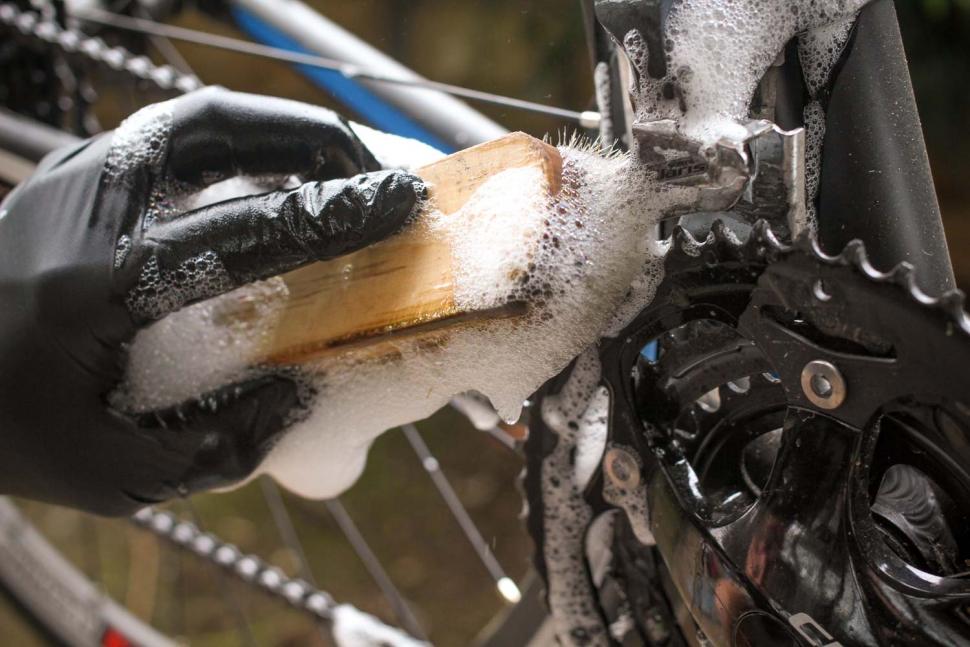
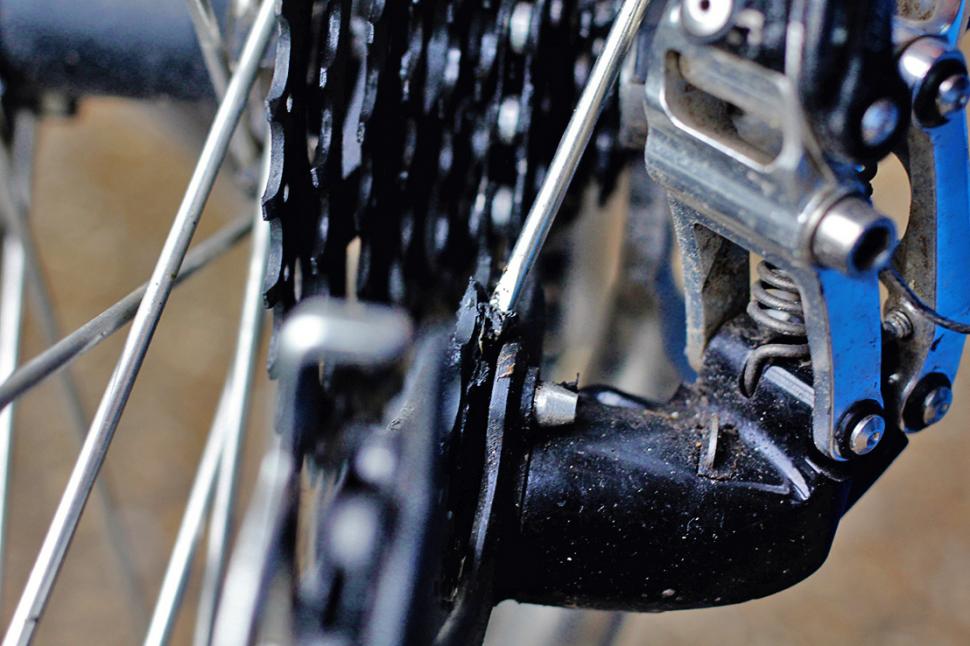

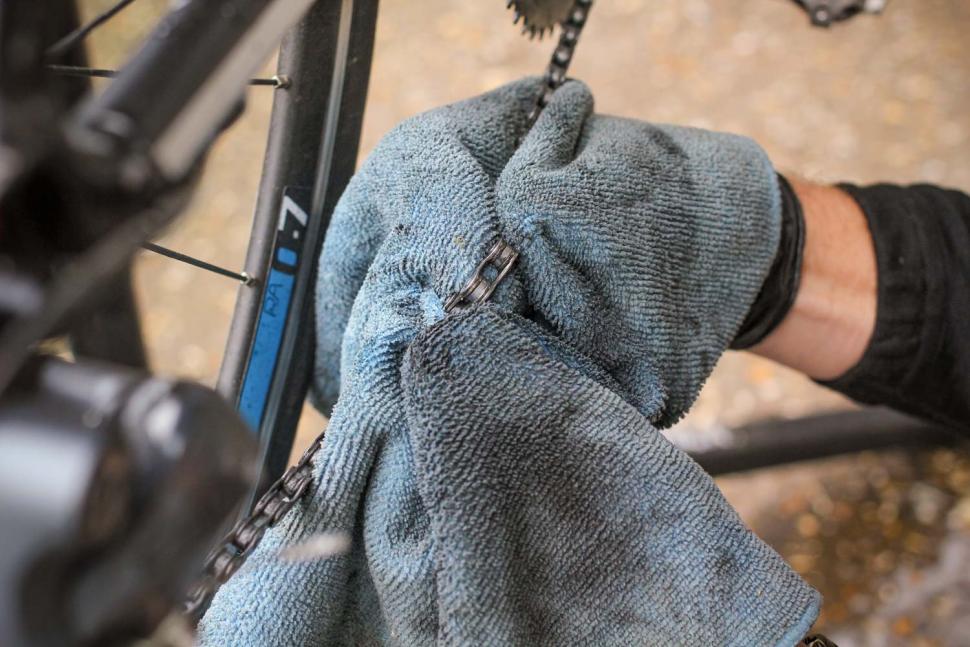
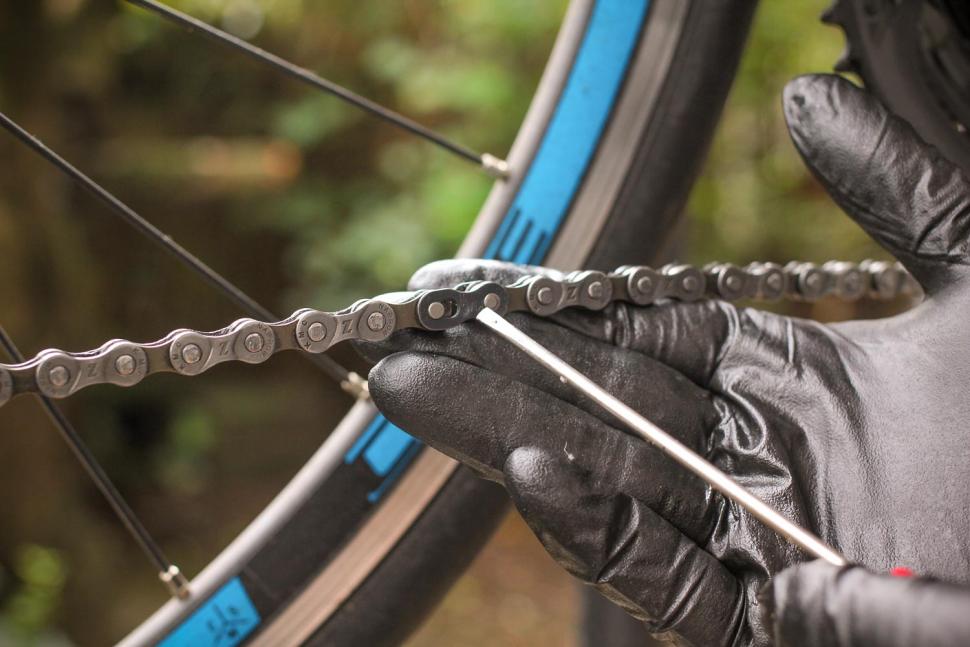

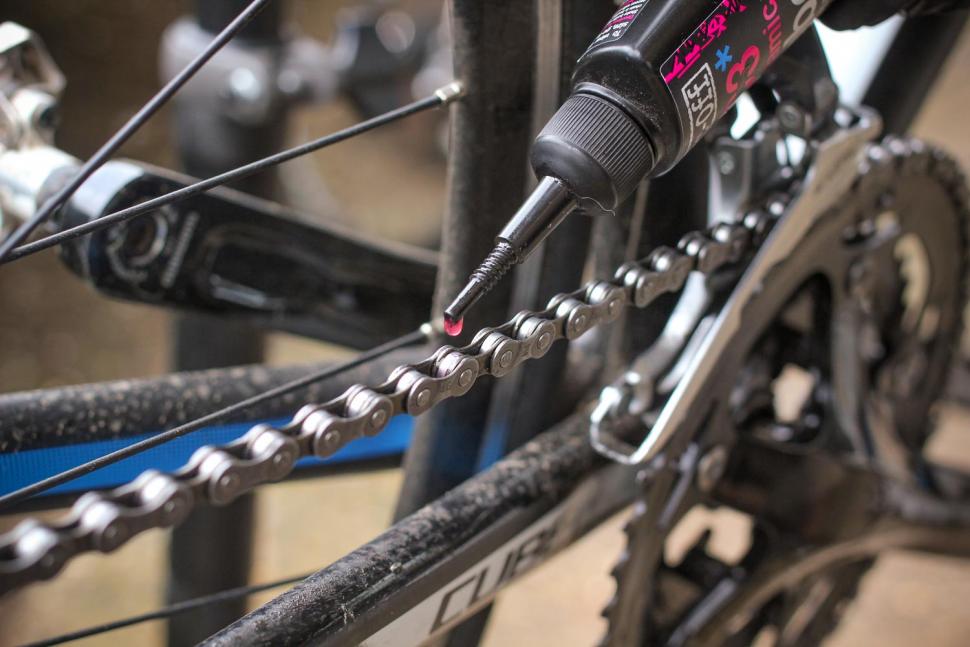
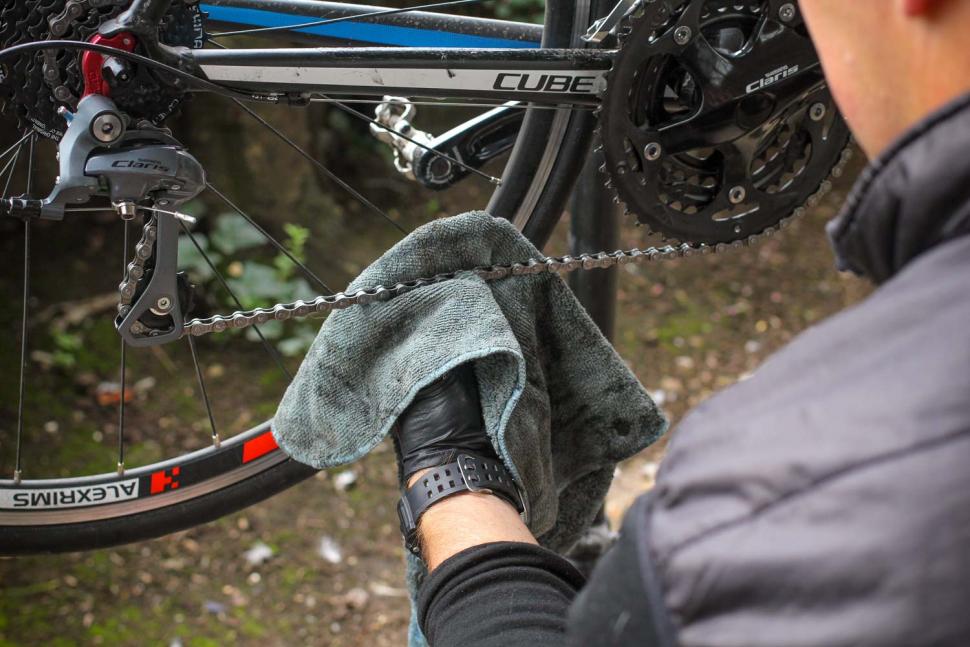
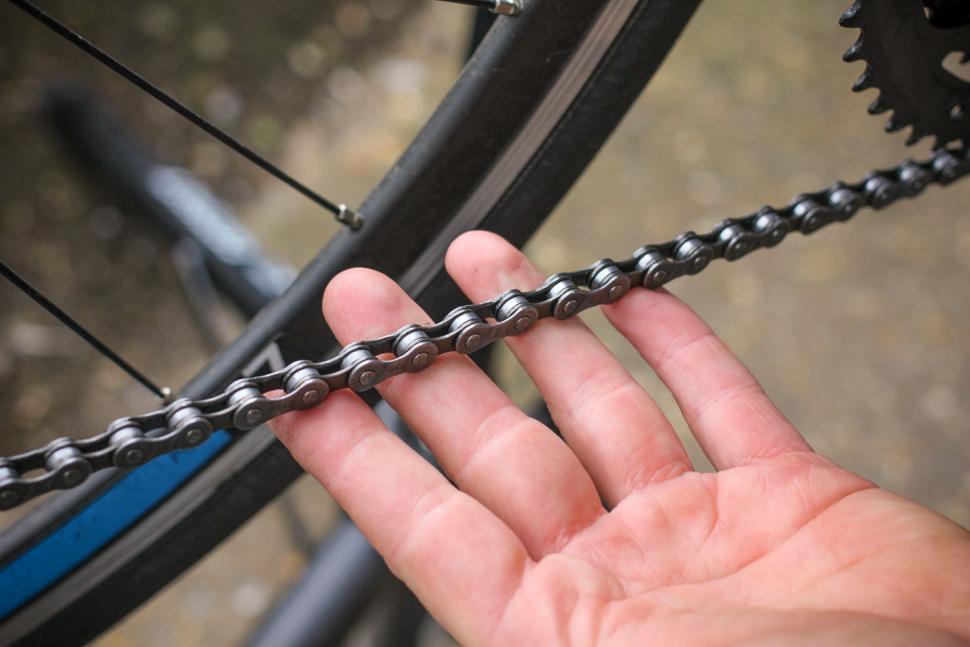
Add new comment
71 comments
same for me - the little time I have left from family and work is preferable used to ride and not to geek out on detailing my bike (or car)...
using a pencil or other writing implement, perhaps a calculator or just work it out in your head....
Time in hours to clean the chain (including cleaning self)= x
Time to swap-out new chain = y
Value of time £/hr = a
Cost of cleaning fluid, lubricant, depreciation on cleaning machine = b
Cost of new chain = c
If ((xa-ya)+b>c then just put a new chain on!
Break chain, chuck it in the bin, fit new chain. Every single ride.
Thought you just got a new bike?
Anyway 80/20 rule works for me. Clean it regularly, but don't get too obsessed and you get 80% of the benefits (and maybe component life) for 20% of the effort.
Money's tight on account of my chain expenditure
In all seriousness though, wipe with a rag and then a bit of oil. I give it a proper clean every other month, perhaps a bit more if the weather's been terrible. I find that green Finish Line lube does the trick and lasts for ages.
Christ - do you not have jobs/families/cycling to do? Your "how to clean a chain" routine will take a lifetime. Here's my suggested regime. Basically it boils down to start clean, then little and often.
When you get a new chain, before you ride the bike anywhere is to put some degreaser on a rag and get most of that packing grease off. They grease chains to preserve them on shelves - its the grease in the rollers/between the plates that matters, all the rest of that grease just becomes a magnet for grime.
If you haven't done this, then use one of those hand held chain cleaners. Yes, chain manufacturers aren't fond of them. It's just like using a jetwash to clean your bike, there's a trade off between convenience (and potentially having to buy a new chain earlier) and treating your chain like its a first edition of the Gutenberg bible (and having to eat from a skip because you have had to give up work in order to have time to hand polish each link individually).
If you start with a clean chain, keeping it clean is pretty simple in my experience (although I tend to wash my bike almost after every ride - I am, like Matt Seaton "on the spectrum"). When you wash your bike, use a good (by which I mean "one that foams a lot") detergent, get a sponge and run chain through sponge while squeezing, watch suds carry dirt and grime away. Dry with a cloth. Apply a light lube to chain to drive water out (the Morgan Blue spray one seems to work pretty well) while spinning cranks backwards. Use a rag to remove excess lube. Before riding bike, apply a proper lube (am currently liking Muc Off lubes although that may be because the application bottle is very easy to use), again removing excess.
@longinthe tooth
spot on.
both KMC and Shimano's advise is to never use solvents or degreasers and nothing more aggressive than "mild detergent". When you are manufacturing millions of chains a year, its advise I'd take as golden.
From KMC's website:
Cleaning
-Clean your chain after each trip, especially after riding in the wet.
-Always use a piece of dry cloth to clean the chain and it’s component parts.
-If neccesary, use an old toothbrush to clean between the plates.
-Do not forget the sprockets, front changer and derailleur pulleys.
-To remove mud or sand, use a bristle brush, if necessary with light soapy warm water .
-Never use acidic or alkali based detergents (such as rust cleaners), these agents can damage the chain and may cause breakage.
-NEVER EVER use a so-called ‘chain washing machine’ in combination with solvent. This is the one and only sure way to instantly ruin your chain.
-Avoid the use of solvents, not only are these bad for the environment, they remove lubricant from the chain’s bearing.
Lubrication
-lubricate the chain every time you clean it, scrub it, or wash it with any solvent (the usage of solvent is not recommended!);
-before lubricating, make sure the chain is dry;
-use a lubricant which initially penetrates the chain’s bearing, and then turns ‘sticky’ or ‘dry’. In this way you can reach the chain parts which are most sensitive to wear;
-make sure you are using the appropriate lubricant - you can test it by spraying some on your hand - first it feels like water (penetration), after some time it should become sticky or dry (durable lubrication);
-in order to avoid a build-up of excess grease, try to apply it on the critical places only, like the rollers. Applying grease there helps to reduce chain wear and noise;
apply just a little grease on the rest of the chain to prevent rust;
-remove excess grease from the outside of the chain;
in the case of derailleur bikes: do not forget to pay some attention to the derailleur pulleys, chainrings and cassette sprockets. Use the same principle as above for maintaining and lubricating them.
-after lubricating, use a dry cloth to remove excess grease from the chain’s outside, this prevents attracting excessive amounts of dirt and dust.
Agree entirely. Dont use degreasers. A little and often is the best way with cleaning, using a dry old towel or similar. Once degreaser gets inside the chain it is virtually impossible to remove and will prevent lube getting inside .
Dismantle the pulley wheels and clean by hand , reassemble with a little lube on the bolt shank.
Clean derailleurs similarly with patience and relubing each of the eight pivots in the parallelograms.
5. If your chain has a master link, remove it and put it in a container such as a 500ml fizzy drink bottle that's half full of degreaser.!!!!!!!!!!
Please do not follow this advice, it is very dangerous to fill any container that used to contain a drink of any kind with a potentially lethal chemical and irresponsible to suggest it.
As a member of St Johns Ambulance for 10 years, I can tell you from experience that if a child sees a pop bottle with a liquid in it then they may think its something good to drink!
Children have been made seriously ill and some have died from drinking petrol, diesel, degreaser, acid etc in the past that they have discovered in a pop bottle - it only takes a moment!!
Only put chemicals of any kind in a suitable container, preferably with a child proof top - ok use a jar if you must as the contents are less likely to be mistaken for a drink.
Reminds me of this horror story.
https://books.google.co.uk/books?id=1H6y0Qjl4r8C&pg=PA12&lpg=PA12&dq=dra...
There was a feature and interview the the unfortunate chap in question on TV once. Nasty incident.
If you use dry lube then just apply a drop to each link, after each ride, spin the cranks for a minute and use a clean cloth to remove the excess. If you apply the dry lube often enough it acts as a flush removing all the debris.
I use the dry lube from the second ride after a new chain and usually do not need to degrease the chain for at least 18months.
Doesn't work with wet lubes.
Am I the only one who remove(with KMC missing link) the chain and put it into a bottle, with muc-off drivetrain cleaner and water.
Then shake shake shake...
Repeat several times until the chain is clean, hang the chain until it's complete dry.
Also, remove and disassemble cassette, rear derailleur and chainring to clean them.
After chain is dry, install everything back and lube.
At least the method keeps my drivechain quite clean.
Lube in the roller does nothing, it needs to be between the plates to get into the pin, thats where the real friction is.
Also some very thorough and detailed tests by a German bike mag (can't remember the name) a few years back seemed to suggest that degreaser is a very bad idea because it removes the original (apparently very good) lube and shortens the chain life.
Once put a chain in a bottle with degreaser and gave it a shake, then left it to soak. After lubing it and replacing it I got a rusty chain within a couple of weeks. Never done that again. I agree that it removed the original grease, which was doing a good job of protecting the chain.
Now I regularly (weekly) use a chain cleaner with diluted degreaser, and a rag to wipe it off quickly, then relube (dropper, not spray). This is enough to keep it in good working order. For a thorough clean I'll take it off and use a toothbrush, and also remove and clean the cassette, jockey wheels etc.
Geekery over. Sorry about that.
If you're going to do a job, you may as well do it properly. Follow Sheldon's instructions here:
http://www.sheldonbrown.com/chainclean.html
Ah, damnit, beaten to it.
This is a great method - Thanks for this post!
I will spending my winter evenings cleaning my chain to look sparkling new!
Does anyone have a negative experience of ultrasonic cleaners? I've looked into them in the past but never bought one.
I'm a fan of the KMC chains with the connecting link. Degreaser in an old milk carton seems to do the trick for me with a good shake.
Mickle method. Because life's too bloody short.
Exactly as above EXCEPT.....
Between steps 5 and 6 remove and separate cassette, clean until spotless with a toothbrush/ soft cloth, reinstall. Clean front chainrings. Clean jockey wheels.
Might as well go the distance!
If ever an article was guaranteed to bring out the cycling geeks...
Procedure is pretty simple but methodical:
1. Apply diesel (sparingly) to chain, cassette, derailleurs (front and rear) and chainrings. Use a small paint brush or like.
2. Leave for 5-10mins while filling bucket with hot water and your chosen bike wash/detergent.
3. Pre-Rinse bike. Wash/Soap complete bike and rinse. With remaining soapy water (or neat dish washing liquid if you like) wash chain, cassette, derailleurs (front and rear) and chainrings using an old dish washing brush. Rinse drivetrain thoroughly.
4. Back pedal cranks while gripping chain (beneath chainstay) with rag / garage strength paper towel to remove remaining dirt and old lube.
5. Dry chain with rag or air line (if available). Chain should look factory clean after this. Re-lube sparingly with chosen lube (my favourite is Rock Oil Motorcycle Chain Lube). Allow to dry and wipe off excess.
Been using the above method for several years. I get on average 8000km out of a chain (0.5 on the wear indicator for 11speed chains). Would recommend using Campag chains on all manufacturers' groupsets as I regulary get more the 20% extra lifespan from Campag chains compared to Shimano/Sram chains on Ultegra 6800 grouppo
I love a clean chain.
1. Wipe external grime off chain by running it through a rag ala the Mickle method.
2. Use chain cleaning tool and degreaser to get remaining external grime off then rinse with water.
3. Open chain and put into a plastic jar with a wide opening and cover with 500ml of methylated spirit. Shake for 3 min, leave overnight and shake again for 3 mins.
4. Take chain out of meths and immerse in melted candle wax (paraffin). Swish around for 3 minutes and leave to soak for 10 then swish again for 3.
5. Take out of wax and hang to dry.
If this method was used for the previous clean then you can skip steps 1 and 2 because it will be externally clean already. Getting the grime out of the inside is the important part and the chain cleaner tool can't do that.
those are all just the lazy, quick fix methods of cleaning a chain. here's how to do it properly: http://www.sheldonbrown.com/chainclean.html
Hahahaha
No one in their right mind would do that, if it isn't quick and cheapish. Just buy a new chain, they are not that expensive.
I actually do this mid ride if the conditions require. It's why I have a Carradice bag, to lug this stuff round with me. I've never had to replace a chain yet.
those are all just the lazy, quick fix methods of cleaning a chain. here's how to do it properly: http://www.sheldonbrown.com/chainclean.html
I wanted to try this but couldn't find Phil Wood green grease in the UK and was worried about not doing it properly....... so I just stopped riding my bike! I now have a BMI of 32!
Re: the photo of applying lube above point 6. I suggest you're applying lube to the wrong side of the chain - the side which is not going to come into contact with the sprockets.
It's not the contact with the sprockets that's the major issue, it's the lube inside the links, that's where the wear occurs. You only need a minuscule coating on the outside of the chain, enough to stop rust and not pick-up too much clag.
Quick method
Take chain off bike, fit spare chain, job done
Now drop dirty chain in solvent/gunk. Place in ultrasonic bath leave 5 mins, place clean chain in water ultrasonic for 2 mins. Take ultra clean chain drop in tray of already melted chain wax, remove and wipe down. Longest job wiping excess wax from chain.
Pages